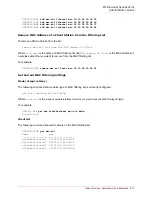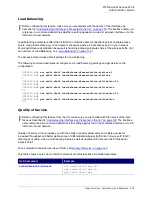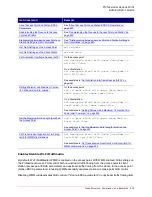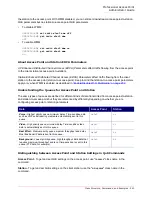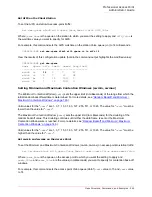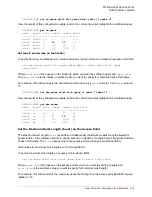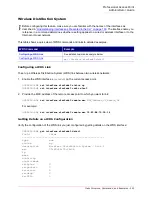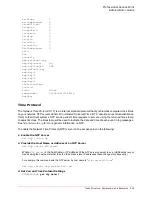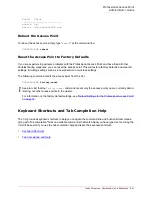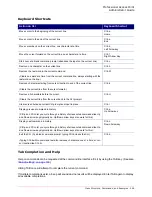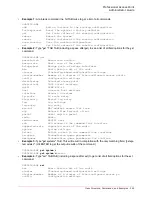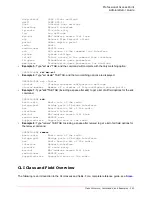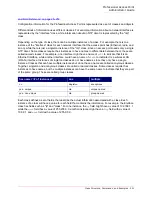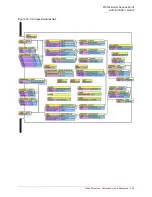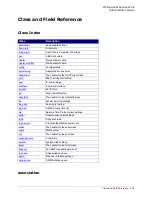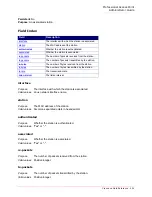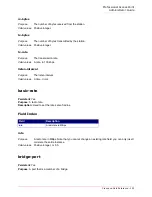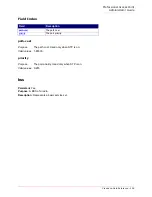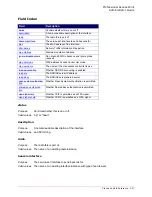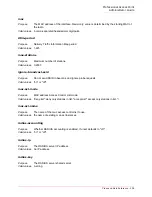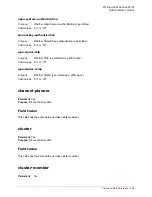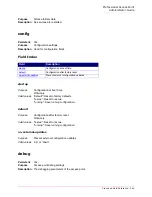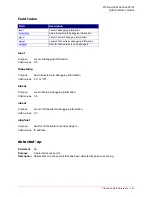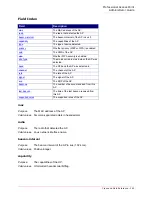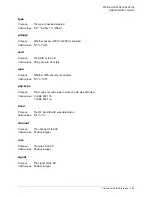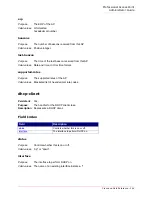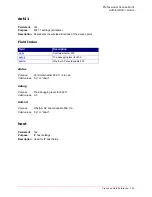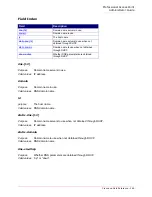
Professional Access Point
Administrator Guide
Class Structure, Commands, and Examples - 251
and Field Reference” on page 25–253
.
Configuration information for the Professional Access Point is represented as a set of classes and objects.
Different kinds of information uses different classes. For example, information about a network interface is
represented by the "interface" class, while information about an NTP client is represented by the "ntp"
class.
Depending on the type of class, there can be multiple instances of a class. For example, there is one
instance of the "interface" class for each network interface that the access point has (Ethernet, radio, and
so on), while there is just a singleton instance of the "ntp" class, since an access point needs only a single
NTP client. Some classes require their instances to have names to differentiate between them; these are
called
named classes
. For example, one interface might have a name of
eth0
to indicate that it is an
Ethernet interface, while another interface could have a name of
wlan0
to indicate it is a wireless LAN
(WLAN) interface. Instances of singleton classes do not have names, since they only have a single
instance. Classes that can have multiple instances but do not have a name are called anonymous classes.
Together, singleton and anonymous classes are called unnamed classes. Some classes require their
instances to have names, but the multiple instances can have the same name to indicate that they are part
of the same group. These are called group classes.
Each class defines a set of fields, that describe the actual information associated with a class. Each
instance of a class will have a value for each field that contains the information. For example, the interface
class has fields such as "ip" and "mask". For one instance, the
ip
field might have a value of 192.168.1.1
while the
mask
field has a value of 255.255.0.0; another instance might have an
ip
field with a value of
10.0.0.1 and
mask
field with a value of 255.0.0.0.
has name? \ # of instances?
one
multiple
no
singleton
anonymous
yes - unique
n/a
unique named
yes - non-unique
n/a
group named
Summary of Contents for Instant802 APSDK
Page 1: ...Professional Access Point Administrator Guide R46 1224 00 rev 2 0 07 06...
Page 2: ......
Page 4: ...Professional Access Point Administrator Guide iv...
Page 8: ...Professional Access Point Administrator Guide viii...
Page 42: ...Professional Access Point Administrator Guide Basic Settings 42...
Page 52: ...Professional Access Point Administrator Guide Access Points 52...
Page 58: ...Professional Access Point Administrator Guide User Management 58...
Page 62: ...Professional Access Point Administrator Guide Sessions 62...
Page 70: ...Professional Access Point Administrator Guide Channel Management 70...
Page 88: ...Professional Access Point Administrator Guide Neighboring Access Points 88...
Page 96: ...Professional Access Point Administrator Guide Ethernet Wired Settings 96...
Page 120: ...Professional Access Point Administrator Guide Security 120...
Page 128: ...Professional Access Point Administrator Guide Virtual Wireless Networks 128...
Page 134: ...Professional Access Point Administrator Guide Radio 134...
Page 138: ...Professional Access Point Administrator Guide MAC Filtering 138...
Page 152: ...Professional Access Point Administrator Guide Quality of Service 152...
Page 160: ...Professional Access Point Administrator Guide Wireless Distribution System 160...
Page 164: ...Professional Access Point Administrator Guide Time Protocol 164...
Page 170: ...Professional Access Point Administrator Guide SNMP 170...
Page 290: ...Professional Access Point Administrator Guide Configuration Troubleshooting 290...
Page 298: ...Professional Access Point Administrator Guide Regulatory Information 298...
Page 328: ...Professional Access Point Administrator Guide Index 328...

